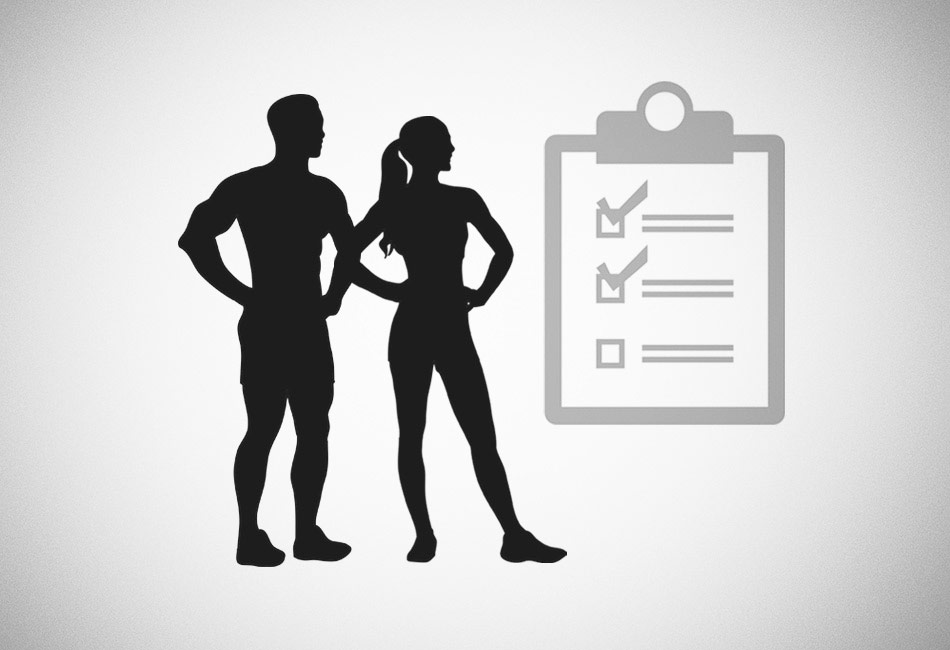Every time you do something physical your body changes. As a matter of fact it changes even when you don’t do anything physical which is the problem. Your body is an adaptive machine that’s in constant dialogue with its environment.
Sit in a chair for eight hours a day doing nothing more strenuous than pushing a mouse around and this is what happens: your muscles begin to weaken, your metabolic system slows down. Your body stockpiles calories in the form of excess weight “just in case you need fuel in the future”, your aerobic and cardiovascular systems remain unchallenged and begin to degrade - your body thinks they are not really that necessary to keep at peak any more.
As an adaptive machine your body does all this because it thinks you no longer need to swing a club or outrun saber-tooth tigers therefore it sheds all the excess high-maintenance abilities it has (muscle, finely-tuned cardiovascular and aerobic functions). Conversely, should it be physically challenged it also adapts which means that even small doses of daily exercise are enough to begin to make it change.
Micro training sessions during the day add up, everything you do will count so even on days when you don’t really have time to exercise you can do an hour’s worth of training in total, letting your muscles recover while still continuing to train them. You can do a few exercises here and there, do something every hour, go for an extra brisk walk and by the end of the day you would have done more than if you put in an hour’s worth of exercise in one go. It’s easier to fit into your day and it’s easier on you load-wise plus it keeps you working and keeps you active. That’s what casual training is.
There are several ways to casually train throughout the day. Pick one or several and stick to it.
Training by numbers
In the beginning of the day, write down a total number of reps of several exercises you want to complete by the time the day is up. It can be 100, 200, 300 or 400 of everything – sit-ups, push-ups, squats and lunges. Every time you take a break or feel yourself slowing down at work do a set of each and subtract it from the total. Continue until you have reached the number and you now have zero reps left to do.
Sample lists:
Strength List: 200 squats, 200 sit-ups, 50 push-ups
Cardio List: 400 high knees, 400 jumping jacks, 80 burpees
Fighter List: 1000 punches, 600 side kicks, 600 turning kicks
Complete throughout the day in manageable sets. As you get stronger, slowly increase your total numbers from day to day.
Hourly drills
Pick one of the drills:
1 1 minute of jumping jacks
2 60 high knees (30 each leg)
3 20 burpees
4 40 punches + 1 push-up | 3 sets back to back
5 100 side leg raises (50 each leg)
Set a timer to remind you to do the drill every hour. The moment you see or hear the reminder, perform the drills. You should be out of breath by the end of it – then get back to whatever you were doing. This way you’ll stay active all day long and by the end of your working day you’ll have done hundreds of reps during your micro HIIT drills.
Example: Fitness Drills + digital dice
One Workout - throughout the day
Alternatively to hour-long drills you can pick one particular workout or pick one at random every time and do just one set every hour, every 90 minutes or every 2 hours. You can complete one single routine 7-10 times throughout the day instead of doing it all in one go.
Walking
Get a pedometer app and mind your steps. The Google Fit app is free and ad-free and it’ll keep track of your every move as long as you carry your mobile phone everywhere you go. Keep moving until you hit your goal.
Goal 1: 2000 steps
Goal 2: 5000 steps
Goal 3: 7000 steps
Goal 4: 10,000 steps
Example: The 30-Day Walkabout Challenge
Training in front of the TV
Just because it’s your favourite show’s time it doesn’t mean you can’t work out. While sitting down on a sofa you can do flutter kicks, overhead punches or hold your feet up for as long as possible (it’ll work your lower abs).
If you watch movies on your laptop, stand up and do 100 side leg raises or half jacks.
You can also do HIIT drills during commercials.
It’ll all add up and it will all count. Now imagine how much extra work it is by the end of the week, month and year. Nothing casual about those number.










